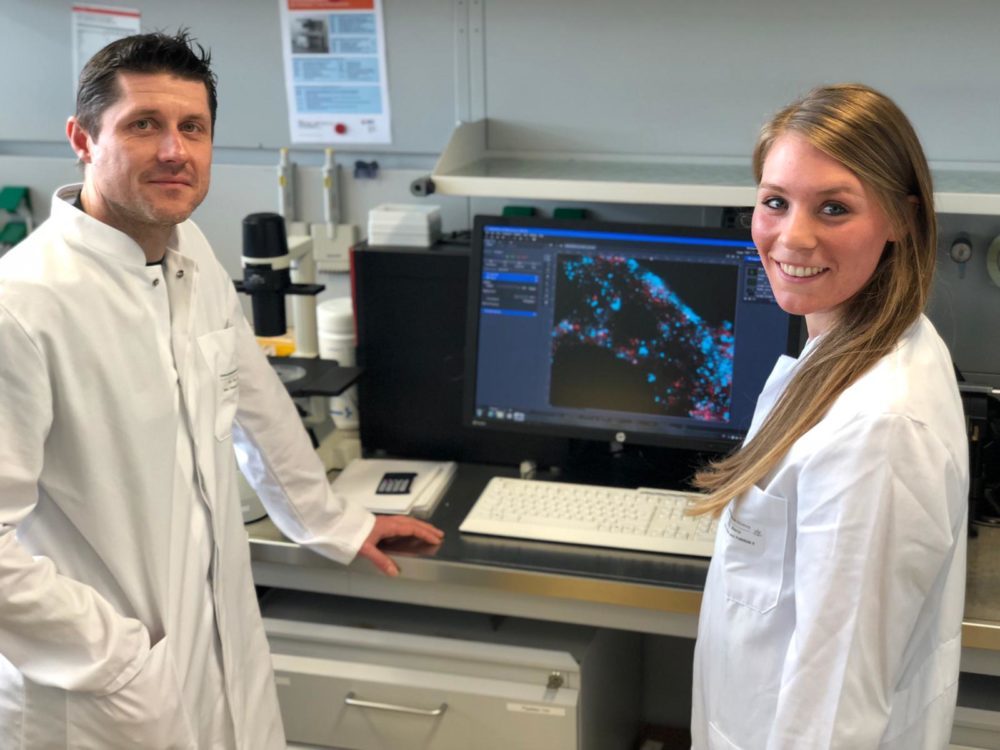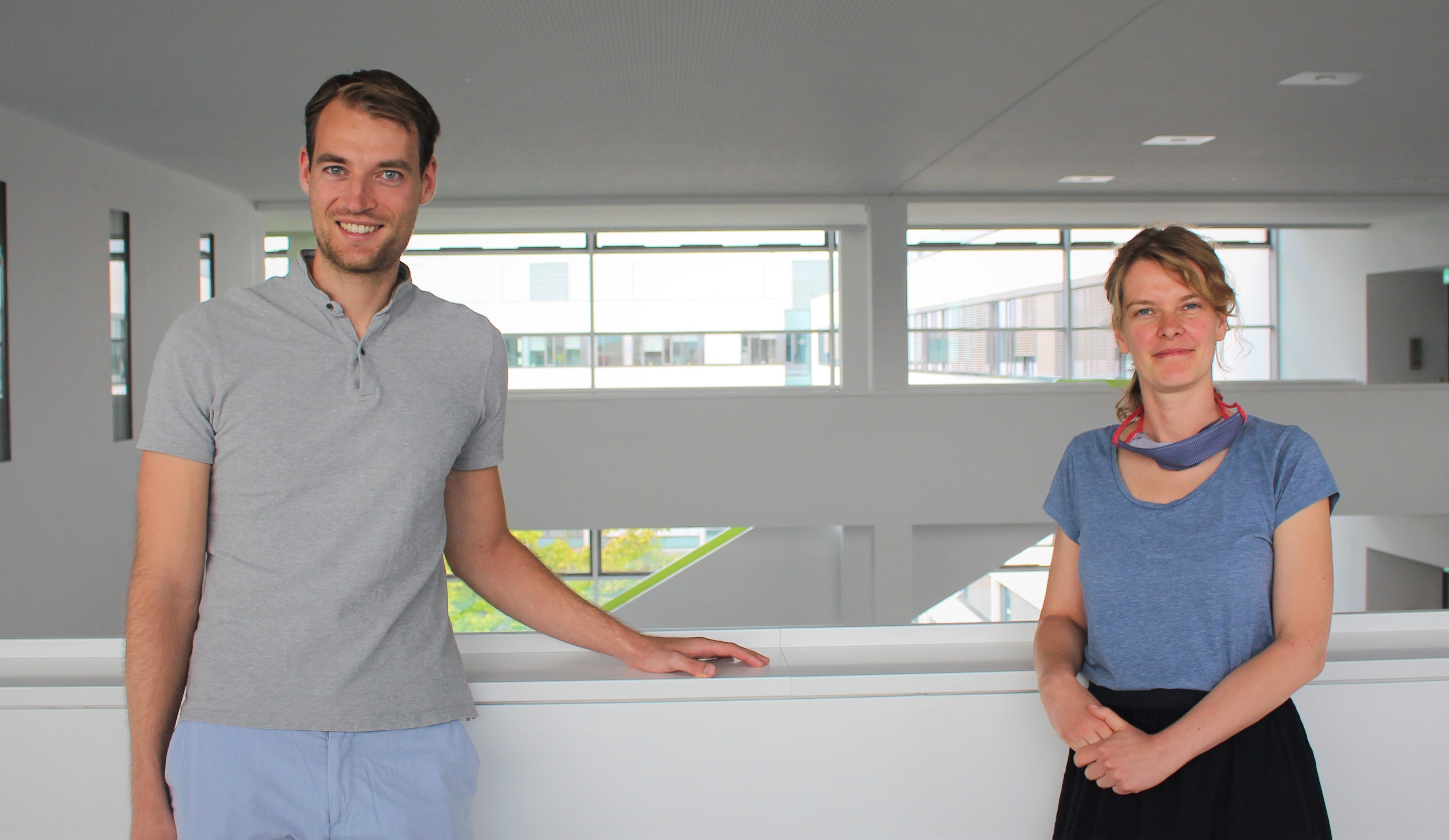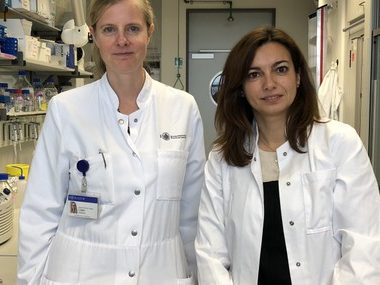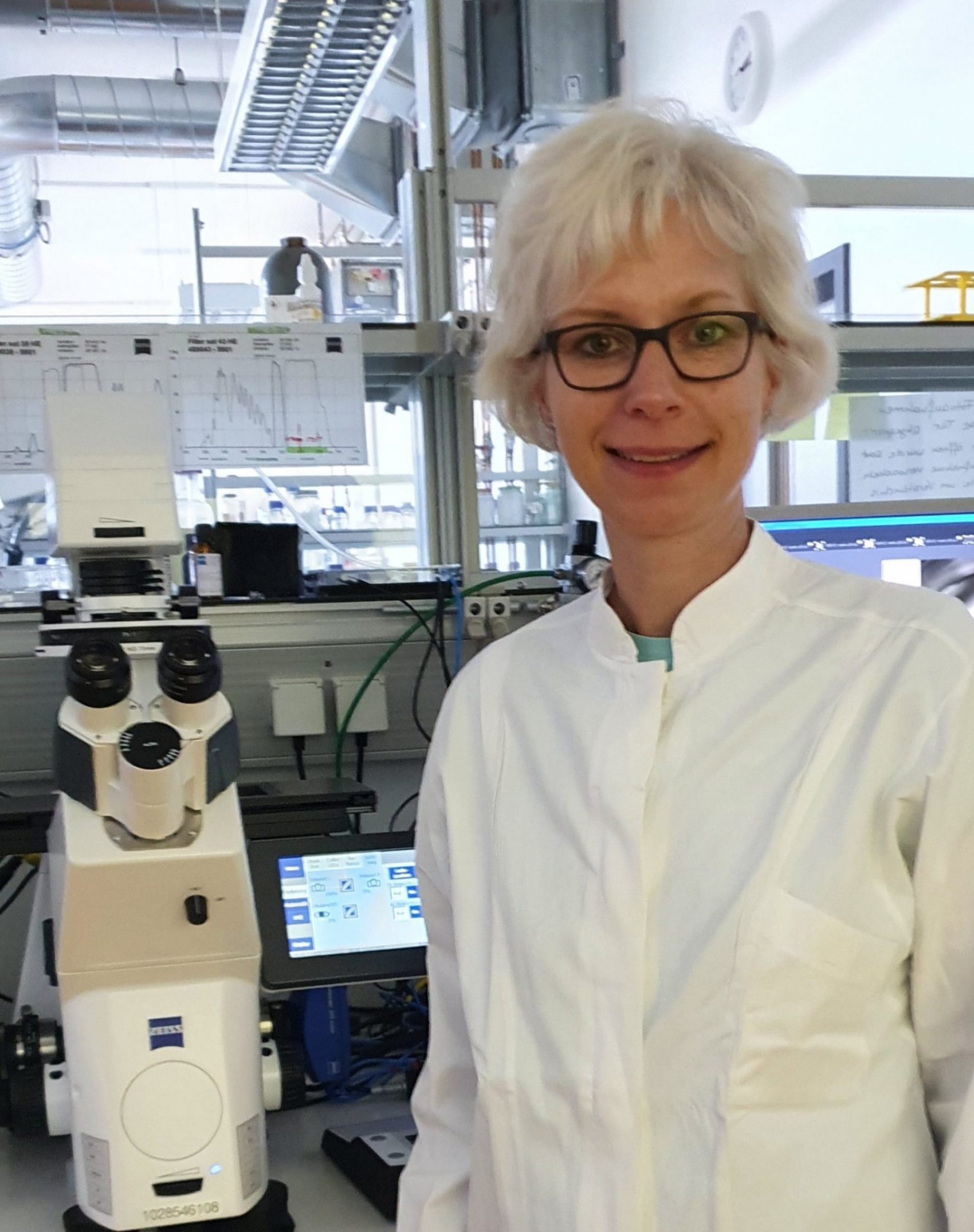by Hannah Manz and Andreas Brandl, Universitätsklinikum Würzburg
What is our area of research?
We intend to elucidate direct cell-cell interactions of Multiple Myeloma (MM) clones and their surrounding cells within the bone marrow (BM) microenvironment where these cells originate. We expect to identify the responsible molecules leading to cell adhesion mediated drug resistance and that are important players in the dissemination process of this to date incurable disease.
What are we currently doing?
Most cancer deaths result from metastasis, the dissemination of cells from a primary tumor to distant compartments/organs. This process involves changes to surface molecules that are essential for tumor cell adhesion to the extracellular matrix as well as to endothelial cells. Our aim is to decipher the role of specific adhesion molecules regarding the process of MM engraftment and dissemination using state of the art 3D-microscopy techniques as well as an established panel of in vitro and in vivo models. Furthermore, we will analyze patient derived primary material within our institution that will allow us to translate our pre-clinical findings into the patient-oriented perspective.
Why do we do what we do?
Though the median 5-year survival rate improved to 7.5%, from 1990 to 2016, MM incident cases increased by 126%, and deaths increased by 94%. Since MM, like most cancers, is a very heterogeneous disease we are in desperate need of better understanding the complex biological systems and underlying mechanisms by which these cells escape patients’ immune response and resist basically all standard treatment regimens. So the question that drives our personal and daily endeavor is why do certain MM cells survive those treatments and ultimately leave their site where they originate? We hypothesize that adhesion molecules can deeply impact our evaluations and understanding, due to their dynamic role in MM progression.
What is the fascination in our job?
Novel technical achievements and possibilities like the analysis of gene expression profiles at a single cell resolution level has an exceptional potential to understand the complex interconnections that occur in basically every biological system, not only in the tumor microenvironment. We are more than happy to be part of this excellent initiative that shares these state-of-the-art technologies and hope that our findings might add a small piece on the way to precision and patient-tailored treatment strategies.




